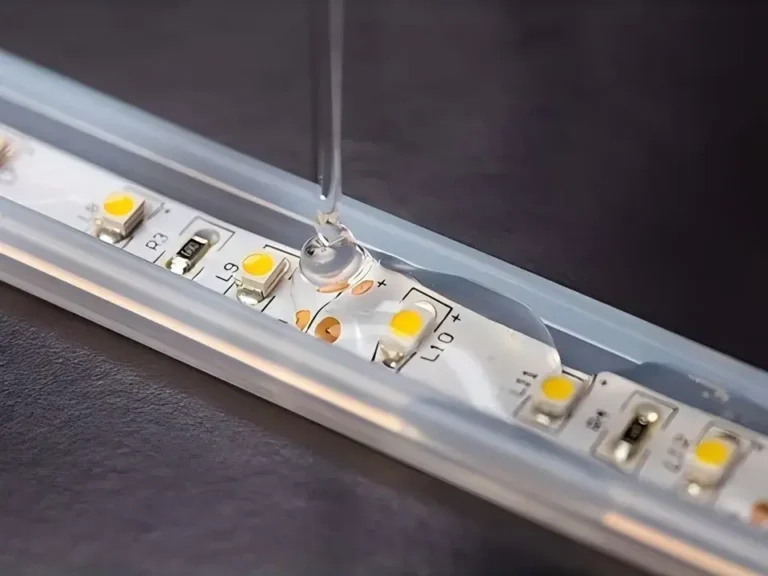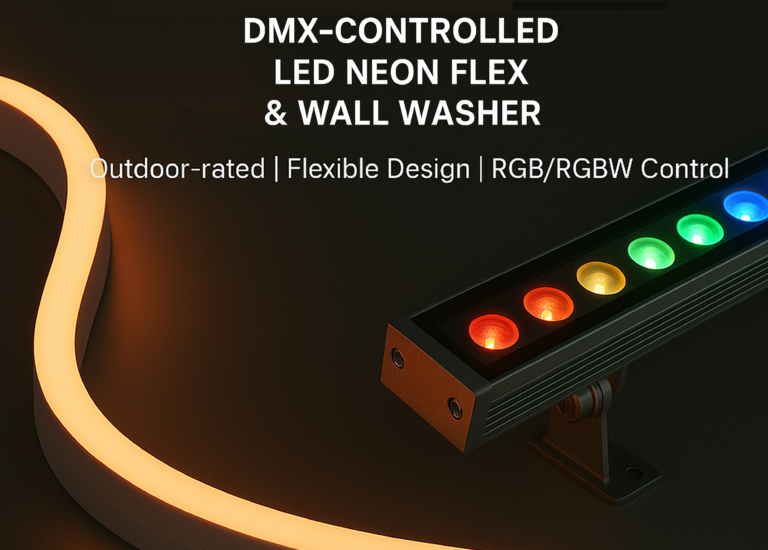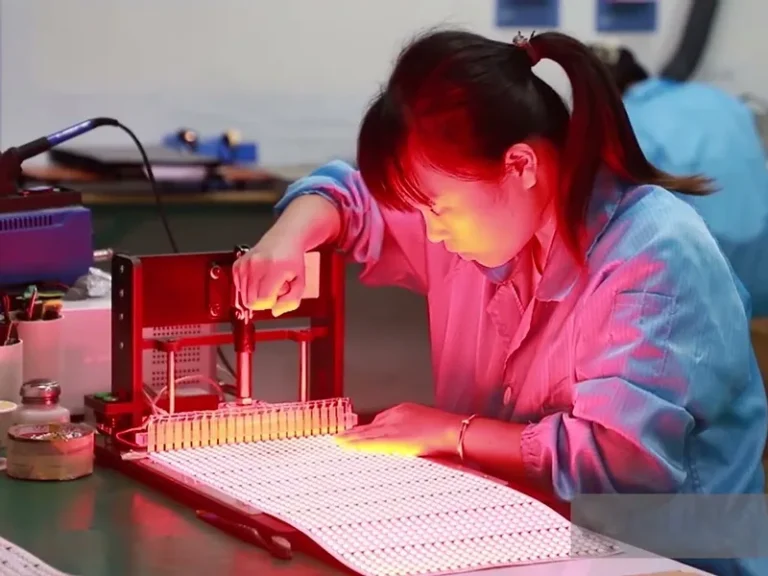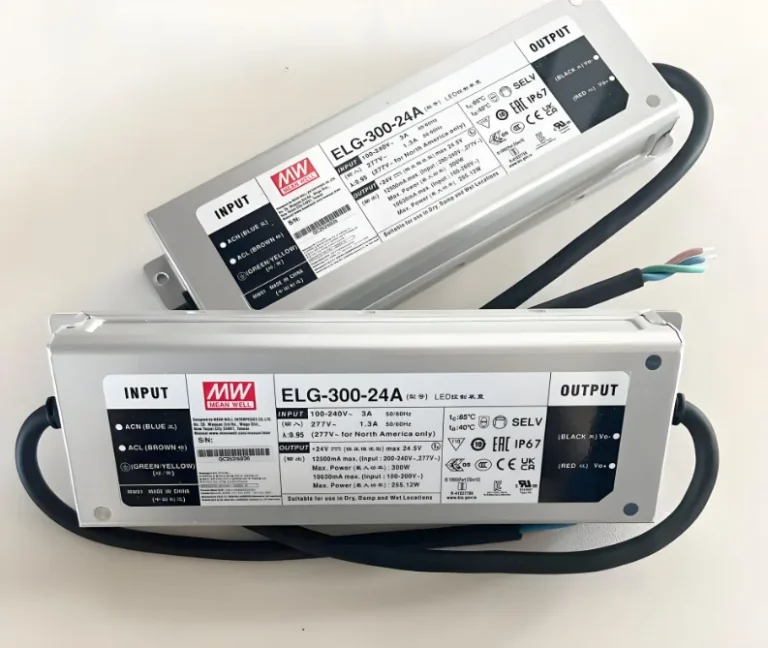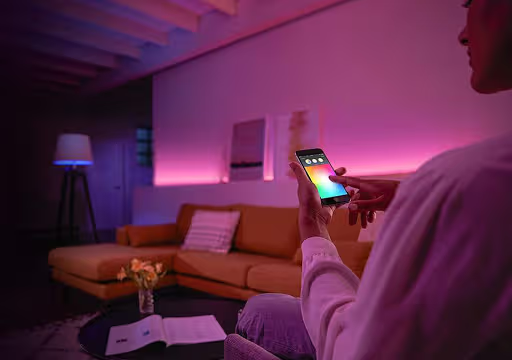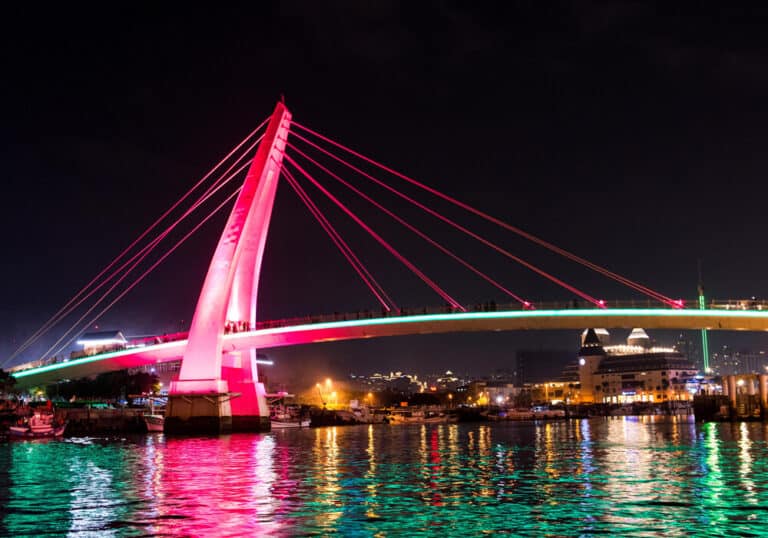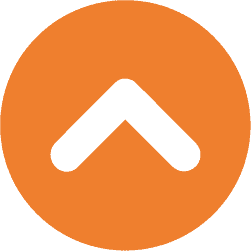ما هي المعايير والاختبارات الخاصة بمراقبة جودة شريط إضاءة النيون LED، وعلى ماذا تستند؟ كمشتري، تحتاج كمشتري إلى معرفة ما إذا كان شريط النيون LED الذي تشتريه قد تم اختباره من حيث السلامة وكفاءة الطاقة وحماية البيئة. نظرًا لأن المصنعين الذين يستوفون هذه الاختبارات بجدية هم فقط المصنعون الذين يستوفون هذه الاختبارات، سيتم ضمان موثوقية وجودة منتجاتهم، وسيشعر الناس بالحرية في شرائها. على سبيل المثال، إذا كنت بحاجة إلى اختبار درجة حرارة اللون والفعالية المضيئة لأضواء شريط النيون، فيجب أن يكون لديك كرة متكاملة أو أداة اختبار بصري. إذا كانت الشركة المصنعة لشريط النيون LED قد أجرت هذه الاختبارات، فسيشعر العملاء براحة أكبر عند الشراء ولن يضطروا للقلق بشأن الحوادث الكهربائية المحتملة أو مخاطر السلامة الأخرى مع المنتج.
تشمل معايير مراقبة الجودة الرئيسية لشرائط نيون LED معايير السلامة والتوافق الكهرومغناطيسي (EMC) وكفاءة الطاقة وحماية البيئة. ويشمل جزء الاختبار اختبار السلامة الكهربائية، واختبار التوافق الكهرومغناطيسي الكهرومغناطيسي، واختبار السلامة البيولوجية الضوئية، واختبار الموثوقية البيئية. بالإضافة إلى ذلك، تُعد جودة المواد، والتصنيف المقاوم للماء (IP)، والشهادات مثل CE و RoHS من النقاط الرئيسية أيضًا. دعونا نتحدث عن معايير مراقبة الجودة لشرائط النيون LED.
ما هي aإعادة Tهو Mعين Qالجودة Cالتحكم سمعايير الصمام الثنائي الباعث للضوء Nإيون سالرحلات؟
معايير السلامة الكهربائية
سلسلة EN 60598 EN 60598: EN IEC 60598 هو معيار إقليمي أوروبي خاص بمعدات الإضاءة، والذي ينطبق على جميع أنواع أجهزة الإضاءة، بما في ذلك على سبيل المثال لا الحصر الإضاءة الداخلية والإضاءة الخارجية ومصابيح LED والفوانيس. هذه المواصفة القياسية مشتقة من سلسلة مواصفات اللجنة الكهروتقنية الدولية (IEC) 60598، والتي تطبق على نطاق واسع في جميع أنحاء العالم. يُستخدم معيار EN IEC 60598 بشكل أساسي لتقييم أداء معدات الإضاءة من حيث السلامة الكهربائية والسلامة الميكانيكية والتأثيرات الحرارية والجوانب الأخرى التي قد تنطوي عليها عملية التركيب والاستخدام لضمان تلبية المنتج للمتطلبات الأساسية للسلامة والصحة وحماية البيئة. ومن بين هذه المواصفات EN 60598-2-14 خاصة بمصابيح وفوانيس النيون، بما في ذلك التصميم الهيكلي وأداء العزل واختبارات تحمل الجهد.
IEC/EN 61347-2-11: توحيد متطلبات السلامة لمعدات الإمداد بالطاقة لشرائط النيون. أصدرت اللجنة الكهروتقنية الدولية (IEC) أحدث إصدار من معيار السلامة لأجهزة التحكم في مصادر الضوء: IEC 61347-2-11:2024 "سلامة معدات التحكم في مصادر الإضاءة الكهربائية- الجزء 2-11: متطلبات خاصة للدوائر الإلكترونية المتنوعة للاستخدام مع وحدات الإنارة."
معايير UL: UL 8750 (سلامة أجهزة LED) و UL 2108 (أنظمة الإضاءة منخفضة الجهد) لسوق أمريكا الشمالية. وتنظم UL 8750 و UL 2108، كمعيارين مهمين من معايير السلامة في UL، سلامة أجهزة LED وأنظمة الإضاءة منخفضة الجهد على التوالي، وقد تضمنت التنقيحات الأخيرة لـ UL 8750 تحسين توافق وحدات تحكم ومصفوفات LED (على سبيل المثال، استكمال تعريف مصفوفات LED ذات الأغراض الخاصة)، وتحسين توافق وحدات تحكم ومصفوفات LED. وقد تضمنت المراجعات الأخيرة ل UL 8750 تحسينات التوافق لوحدات تحكم ومصفوفات الصمام الثنائي الباعث للضوء (على سبيل المثال، إضافة تعريفات لمصفوفات الصمام الثنائي الباعث للضوء ذات الأغراض الخاصة)، بينما يركز برنامج اختبار UL 2108 بشكل أكبر على التحقق من الاستقرار على مستوى النظام.
التوافق الكهرومغناطيسي (EMC)
يشير EMC إلى المنتجات الإلكترونية في حجم التداخل في المجال الكهرومغناطيسي (EMI) والقدرة المضادة للتداخل (EMS) للتقييم الشامل، وهو أحد أهم مؤشرات جودة المنتج والتوافق الكهرومغناطيسي من قبل موقع الاختبار ومعدات الاختبار.
يتضمن اختبار EMI العناصر التالية:
- الانبعاثات الموصلة (م): قياس التداخل الكهرومغناطيسي المتولد من خلال مسارات التوصيل مثل خطوط الطاقة.
- الانبعاثات المشعة (RE): قياس كثافة الإشعاع الكهرومغناطيسي المنبعث من المعدات في نطاقات التردد المختلفة لضمان الامتثال للحدود المحددة.
- التوافقي: تقييم التأثير التوافقي للجهاز على شبكة الطاقة.
- وميض: يقيّم تأثير الوميض للجهاز على الشبكة.
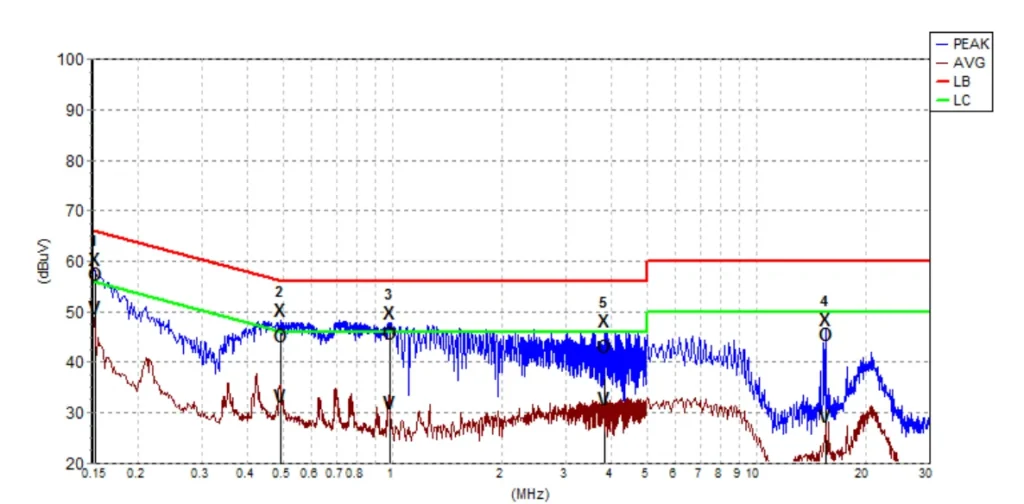
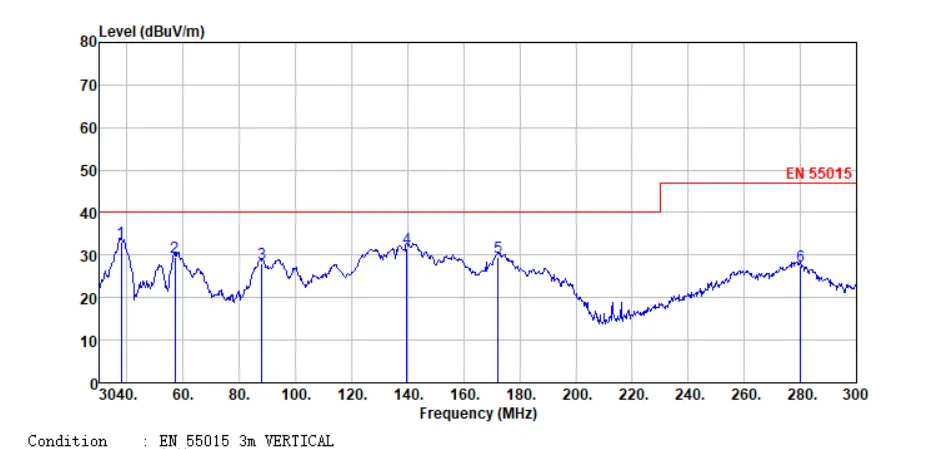
يتضمن اختبار EMS العناصر التالية:
- التفريغ الكهروستاتيكي (ESD): تقييم مناعة المعدات ضد التفريغ الكهروستاتيكي.
- التحويل الإلكتروني للتحويلات المالية: يحاكي تأثيرات النبضات الكهرومغناطيسية عالية التردد على المعدات.
- انخفاض الجهد (DIP): يقيّم مناعة الجهاز ضد انخفاض الجهد.
- الطفرة الموصولة (CS): يقيّم قدرة الجهاز على تحمل التداخل الذي تم إجراؤه.
- الطفرة: يقيّم مناعة الجهاز ضد الفولتية الزائدة.
- PSMS: تقييم مناعة الجهاز ضد المجالات المغناطيسية ذات التردد الصناعي.
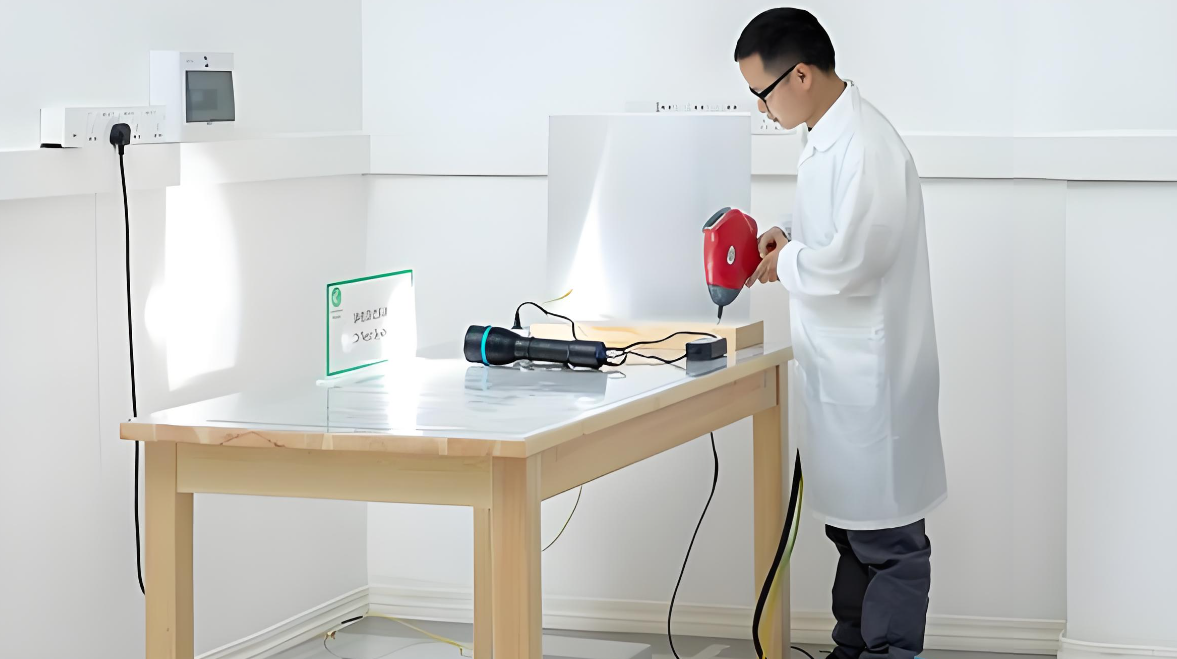
الطاقة Eالكفاءة و Eالبيئة سالمعايير
توجيه ErP (2009/125/EC): يتطلب امتثال منتجات LED لمتطلبات وضع علامات كفاءة الطاقة ومتطلبات التصميم البيئي، مثل شهادة كفاءة الطاقة الأوروبية. يوضح الرسم البياني أدناه أحدث فئة كفاءة الطاقة الأوروبية المقابلة لكفاءة الإضاءة:
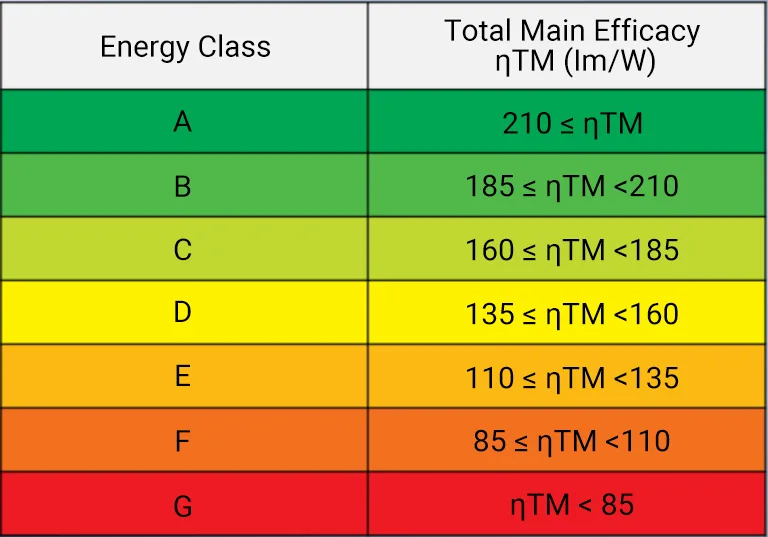
RoHS و REACH: تقييد استخدام المواد الخطرة (مثل الرصاص والزئبق) والمواد الكيميائية لضمان امتثال المواد للمتطلبات البيئية. ينتمي توجيه RoHS (توجيه تقييد المواد الخطرة) إلى توجيه الاتحاد الأوروبي (التوجيه 2011/65/EU)، والذي يجب نقله إلى القوانين الوطنية للدول الأعضاء ليصبح ساري المفعول. REACH هي لائحة الاتحاد الأوروبي (لائحة الاتحاد الأوروبي (EC) رقم 1907/2006) وهي قابلة للتطبيق مباشرةً في جميع الدول الأعضاء دون الحاجة إلى النقل.
السلامة البيولوجية الضوئية
EN 62471: يقيّم مخاطر الإشعاع الضوئي (مثل مخاطر الأشعة فوق البنفسجية والضوء الأزرق) من مصادر ضوء الدايود المبتعث للضوء لمنع الضرر الذي يلحق بالإنسان. ومن خلال تحديد كثافة الإشعاع وتوزيع الطول الموجي ومدة التعرض لمصدر الضوء، فإنه يصنف مستوى الخطر (مستوى الإعفاء، منخفض، متوسط، متوسط، وعالي الخطورة)، ويوفر أساسًا للسلامة لتصميم المنتج واستخدامه، ويقلل من خطر الإصابة بأمراض العين المزمنة أو تلف الجلد الناجم عن الإشعاع الضوئي.
ما هي aإعادة Tهو Mعين Tإستس للصمام الثنائي الباعث للضوء Nإيون سالرحلات؟
اختبارات السلامة الكهربائية
اختبار جهد التحمل: التحقق من سلامة المواد العازلة تحت الجهد العالي. الغرض الرئيسي من اختبار تحمل الجهد هو التحقق من أداء العزل وهامش تصميم المنتج لضمان جودة المنتج. من خلال اختبار تحمل الجهد، يمكن الكشف عن العيوب في عملية التصنيع، مثل عدم كفاية مسافة الزحف أو عدم كفاية الخلوص الكهربائي، وذلك لحماية سلامة المستهلكين وموثوقية المنتجات.
اختبار استمرارية التأريض: يضمن فعالية نظام التأريض.
اختبار ارتفاع درجة الحرارة: يقيّم أداء تبديد الحرارة لمصباح الإنارة عند العمل لفترة طويلة من الزمن لمنع تلف الحرارة الزائدة.
الاختبارات البيئية والميكانيكية
اختبار مستوى حماية IP:: على سبيل المثال، IP65/IP68 لتقييم مقاومة الماء والغبار (خاصة للتطبيقات الخارجية).
اختبار رذاذ الملح (ASTM B117): التحقق من مقاومة التآكل.
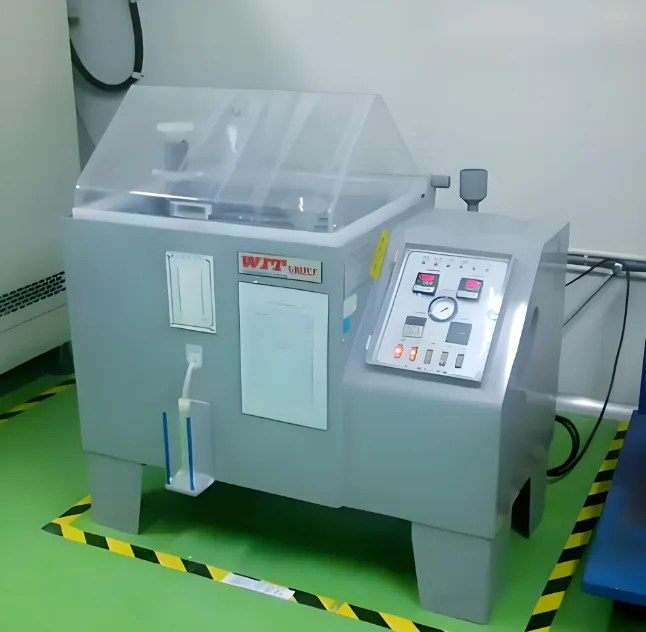
اختبار الاهتزاز والصدمات: ضمان المتانة الهيكلية أثناء النقل والاستخدام.
اختبار الأداء والعمر الافتراضي
LM-80: يختبر صيانة التدفق الضوئي ويقيّم العمر الافتراضي لشريحة LED (يجب استيفاء معايير صيانة التجويف).

اختبار مؤشر تجسيد اللون (CRI): قم بقياس قدرة مصدر الضوء على إعادة إنتاج الألوان (موصى به ≥ 80).
الصمام الثنائي الباعث للضوء Nإيون سالرحلة Pالاستقراء Pالعملية Qالجودة Cالتحكم
1. شراء المواد: اختر رقاقة LED ذات مؤشر تجسيد اللون العالي (CRI ≥ 80) لضمان إعادة إنتاج الألوان؛ يجب أن يكون الغلاف الخارجي مصنوعًا من مادة السيليكون المفضلة المضادة للأشعة فوق البنفسجية والمقاومة للعوامل الجوية (أفضل من PVC) لتجنب الاصفرار والتشقق؛ يجب أن يكون الغطاء الشفاف ناعمًا ومتساويًا وله تصنيف حريق UL94 V-2 أو أكثر. اختيار مزود الطاقة والأسلاك من محركات التيار الثابت والجهد الثابت المعتمدة من UL/CE؛ اختيار المواد المساعدة المانعة للتسرب من درجة حرارة -40 ℃ ~ 120 ℃ لاصق سيليكون لضمان العزل المائي طويل الأمد. تجنب الملحقات منخفضة السعر ومنخفضة الجودة التي تؤدي إلى تعطل الضوء أو مخاطر السلامة.
2. المظهر أناالتفتيش: فحص المظهر هو أحد الأجزاء المهمة لفحص شريط ضوء النيون LED. يجب أن يكون هناك فحص شامل لسطح غلاف شريط الضوء مسطح، ولا توجد خدوش وانخفاضات واضحة، ولون الغلاف موحد، وما إذا كان الجلد متوقفًا، وما إلى ذلك. بالإضافة إلى ذلك ، تحتاج أيضًا إلى التحقق مما إذا كان جزء التوصيل من شريط الضوء ثابتًا ، وما إذا كانت هناك ظاهرة فضفاضة ، وما إذا كان الشعار واضحًا وكاملاً.
3. منتهية Pالمنتج Tإستينغ:: اختبار المنتج النهائي بما في ذلك اختبار الأداء البصري واختبار الأداء الكهربائي.
أ) بصري pاختبار الأداء:: الاختبار الرئيسي لتدفق ضوء النيون، وتوزيع شدة الضوء، واللونية، وكفاءة الضوء، وتوحيد اللون. بما في ذلك ما إذا كان لون الضوء دقيقًا، والسطوع موحد، ولا يوجد وميض أو اختلاف في اللون، وما إلى ذلك. في الوقت نفسه، من الضروري أيضًا قياس ومقارنة التدفق الضوئي وفعالية الإضاءة ودرجة حرارة اللون والمعلمات الأخرى لشريط الضوء للتأكد من أنه يفي بالمعايير ذات الصلة. يتم الاختبار عادةً باستخدام مقياس ضوئي أو نظام تكامل المجال الضوئي. يضمن قياس ناتج الضوء باستخدام كرة مدمجة أو مقياس ضوئي توحيد السطوع. تحقق من أن درجة حرارة اللون ومؤشر تجسيد اللون وتفاوت اللون متوافق مع القيمة الاسمية، مثل 3000 كلفن ضوء دافئ و6000 كلفن ضوء بارد وCRI ≥ 80 وSCDM ≤ 3، لضمان أن اللون موحد وخالٍ من الانحراف.
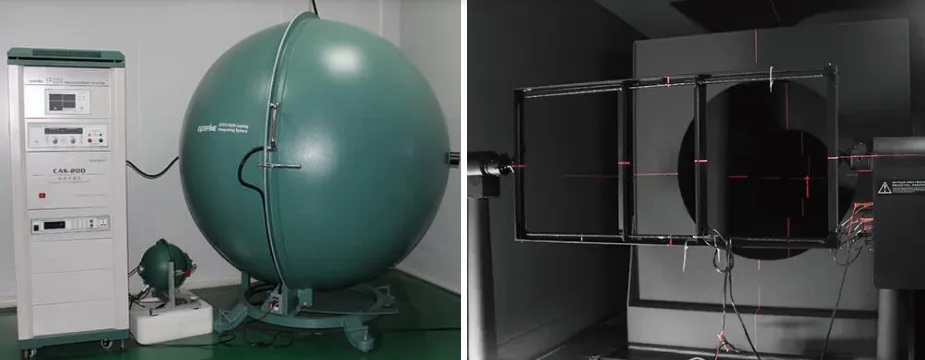
ب) اختبار الأداء الكهربائي: بما في ذلك اختبار تيار المنتج وعامل القدرة والطاقة وما إلى ذلك. قياس قيم الجهد والتيار لشرائط النيون في ظل ظروف العمل العادية للتأكد من أن القيم تتماشى مع نطاقات المعلمات المقدرة لمنع تلف المصابيح والفوانيس بسبب خلل في الجهد أو التيار أو مخاطر السلامة. من خلال حساب طاقة الإدخال (الطاقة = الجهد × التيار)، يمكننا التحقق مما إذا كان استهلاك الطاقة لشريط ضوء النيون يفي بمواصفات التصميم، وتجنب أن تكون الطاقة مرتفعة جدًا أو منخفضة جدًا بما يؤثر على الأداء.
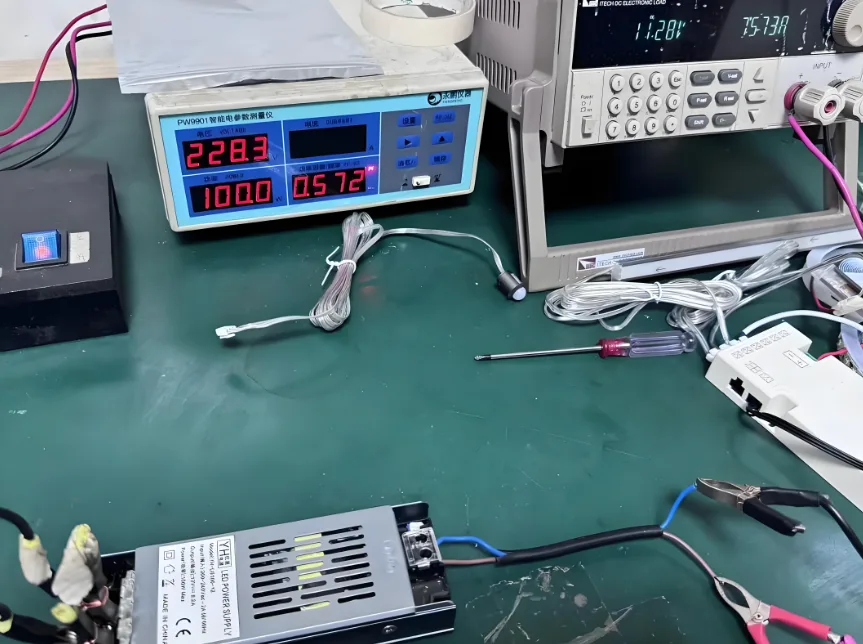
4. السلامة Pالأداء Tإست: اختبار أداء السلامة هو التأكد من أن شريط ضوء النيون LED لن ينتج عنه مخاطر السلامة في استخدام عملية المفتاح. يجب اختبار أداء السلامة للشريط، بما في ذلك الحماية من الحرارة الزائدة وحماية دائرة التحكم غير الطبيعية.
5. التعبئة والتغليف Lأبيلينج Tإست: اختبار التعبئة والتغليف ووضع الملصقات للتأكد من أن عبوة شريط النيون سليمة ومعلّمة بوضوح، وأن التعليمات دقيقة، وأن الأكياس خالية من الخدوش، ولا توجد أي شذوذ في اللون، وأن الحجم يفي بالمتطلبات.
6. اختبار المتانة: يتضمن اختبار المتانة استخدام شريط النيون LED لفترة طويلة لمحاكاة عمله في مجموعة متنوعة من البيئات القاسية. يشمل الاختبار مقاومة درجات الحرارة المرتفعة ومقاومة درجات الحرارة المنخفضة والأداء المقاوم للماء والغبار لضمان عمل شريط النيون بشكل طبيعي في هذه البيئات.
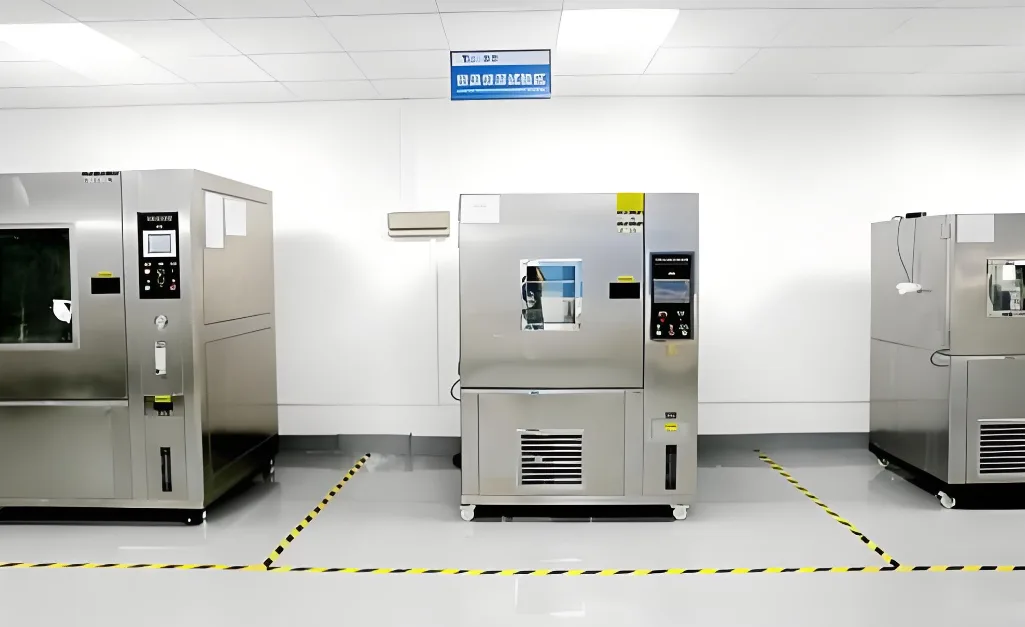
ما هي متطلبات اعتماد شرائط نيون LED؟
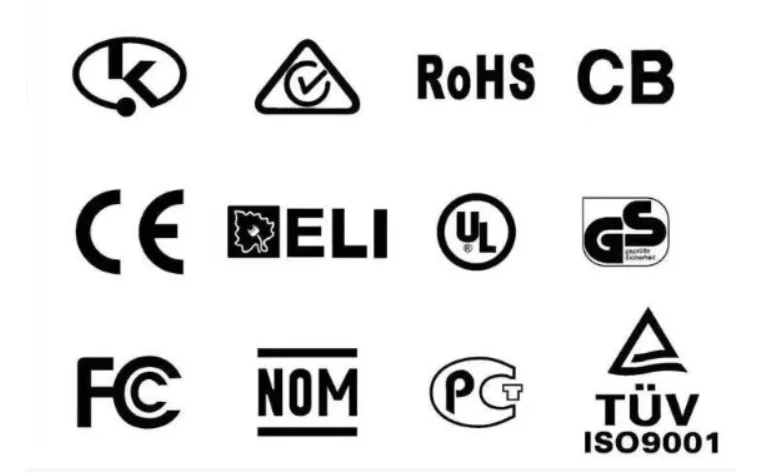
م Mأركينج: لدخول سوق الاتحاد الأوروبي، يجب أن تجتاز اختبارات علامة LVD (EN 60598) و EMC (EN 55015/EN 61547) الخاصة بعلامة الاتحاد الأوروبي.
شهادة UL: شهادة السلامة للوصول إلى الأسواق في أمريكا الشمالية، والتي تغطي السلامة الكهربائية وكفاءة الطاقة.
BIS (الهند) و KC (كوريا): شهادة إلزامية للأسواق الإقليمية، مع مراعاة المعايير المحلية.
يضمن اعتماد شريط النيون LED أن المنتجات تفي بمعايير جودة معينة في التصميم والمواد وعمليات الإنتاج وما إلى ذلك، وبالتالي تقليل الحوادث والنزاعات الناجمة عن مشاكل جودة المنتج وحماية السلامة الشخصية للمستهلكين. وعادةً ما تتمتع المنتجات المعتمدة بجودة وموثوقية أعلى، مما يساعد على تعزيز القدرة التنافسية للمنتجات في السوق وزيادة ثقة المستهلك ورضاه.
المشاكل والمخاطر الشائعة
مخاطر Lالجودة Mالمواد: قد تؤدي رقائق الدايود المبتعث للضوء (LED) ذات الجودة الرديئة أو مركبات ثنائي الفينيل متعدد الكلور إلى اضمحلال الضوء بسرعة أو انحراف اللون أو حدوث قصر في الدائرة الكهربائية.
السلامة Hأزاردز: قد تنطوي قضبان إضاءة النيون LED ذات التحكم الرديء في الجودة على مخاطر متعددة تتعلق بالسلامة. على سبيل المثال، قد تصبح وحدات الإنارة التي لا تؤدي أداءً جيدًا في اختبارات الوصلات المقاومة للانفجار والصدمات مصدرًا للاشتعال في المواقع الخطرة، مما يزيد من المخاطر أثناء الاستخدام.
مشكلات الأداء: يمكن أن يكون لشرائط النيون LED ذات الجودة الرديئة أيضًا مشكلات في الأداء. على سبيل المثال، فشلت بعض المنتجات في اختبار المتانة والاختبار الحراري، ومقاومة الحرارة، ومقاومة الحريق، ومقاومة التندب، وغيرها من العناصر، مما يؤدي إلى استخدام المصابيح والفوانيس في عملية التلف أو الفشل بسهولة.
المشاكل الهيكلية: المشاكل الهيكلية هي أيضاً مشكلة شائعة مع رداءة مراقبة جودة شرائط النيون LED. فعلى سبيل المثال، يمكن أن تؤدي الأسلاك الخارجية غير المؤهلة والأسلاك الداخلية إلى تعطل الأسلاك ومخاطر حدوث ماس كهربائي.
العواقب المترتبة على Lآك من Cالتصديق: قد يؤدي عدم الامتثال لـ CE أو RoHS إلى حظر المنتج من سوق الاتحاد الأوروبي أو فرض غرامات عالية.
خاتمة
تتطلب مراقبة جودة شرائط نيون LED مزيجًا من المعايير والاختبارات متعددة الأبعاد، بما في ذلك السلامة الكهربائية، والتوافق الكهرومغناطيسي (EMC)، وكفاءة الطاقة، وشهادات حماية البيئة. يجب على المصنعين إعطاء الأولوية للمواد التي تتوافق مع معايير مثل EN 60598 و EN 62471 واجتياز اختبارات الاعتماد من قبل منظمات موثوقة (مثل TÜV و SGS). بالإضافة إلى ذلك، تُعد الإدارة الحرارية والاختبارات الآلية أثناء عملية الإنتاج أمرًا أساسيًا لضمان الاتساق.
SignliteLiteLED هي شركة محترفة في تصنيع الصمام الثنائي الباعث للضوء سأضواء الرحلات و أضواء شريطية نيون LED. يحتوي المصنع على معدات إنتاج واختبار أكثر اكتمالاً، ومجهزة بمعدات إنتاج واختبار أكثر اكتمالاً، ومجهزة بمجالات التكامل، واختبارات EMC، واختبارات توزيع الإضاءة، ومختبرات بصرية أخرى؛ وآلات وضع أوتوماتيكية؛ ومعدات اختبار درجات الحرارة العالية والمنخفضة ومعدات التقادم. تتوافق المنتجات مع معايير حماية البيئة RoHS وتلتزم بالعملية الكاملة لمراقبة الجودة، باستخدام خطوط الإنتاج الآلية لضمان موثوقية المنتج. لدى SignliteLED العديد من المنتجات الحاصلة على شهادات CE و ETL و UL وشهادات أخرى؛ إذا كنت ترغب أيضًا في شراء مصابيح النيون LED، فنحن نرحب بك للاتصال بموظفي الأعمال والموظفين الفنيين لدينا، حيث سنساعدك على اتخاذ قرار معقول.
